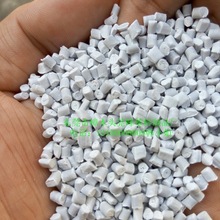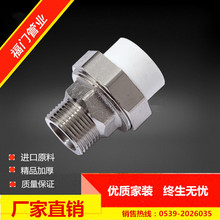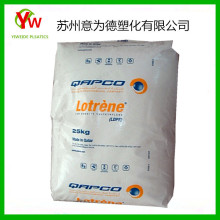Artificial Intelligence Full Course 2024 _ AI Tutorial For Beginners _ AI Full Course_ Intellipaat - Ep58
(Editor: rust)
 Learn Blockchain, Solidity, and Full Stack Web3 Development with JavaScript – 32-Hour Course - Ep199
Learn Blockchain, Solidity, and Full Stack Web3 Development with JavaScript – 32-Hour Course - Ep199 Learn Blockchain, Solidity, and Full Stack Web3 Development with JavaScript – 32-Hour Course - Ep246
Learn Blockchain, Solidity, and Full Stack Web3 Development with JavaScript – 32-Hour Course - Ep246 Learn Blockchain, Solidity, and Full Stack Web3 Development with JavaScript – 32-Hour Course - Ep119
Learn Blockchain, Solidity, and Full Stack Web3 Development with JavaScript – 32-Hour Course - Ep119![Web3 Developer in 2024 Roadmap_ Solidity, Smart Contract, and Blockchain Development [Full Course] - Ep2](https://cbu01.alicdn.com/img/ibank/2016/395/799/2773997593_3624639.220x220xz.jpg) Web3 Developer in 2024 Roadmap_ Solidity, Smart Contract, and Blockchain Development [Full Course] - Ep2
Web3 Developer in 2024 Roadmap_ Solidity, Smart Contract, and Blockchain Development [Full Course] - Ep2 Learn Blockchain, Solidity, and Full Stack Web3 Development with JavaScript – 32-Hour Course - Ep78
Learn Blockchain, Solidity, and Full Stack Web3 Development with JavaScript – 32-Hour Course - Ep78
- Learn Blockchain, Solidity, and Full Stack Web3 Development with JavaScript – 32-Hour Course - Ep158
- Learn Blockchain, Solidity, and Full Stack Web3 Development with JavaScript – 32-Hour Course - Ep199
- Learn Blockchain, Solidity, and Full Stack Web3 Development with JavaScript – 32-Hour Course - Ep168
- Solana Developer Bootcamp 2024 - Learn Blockchain and Full Stack Web3 Development - Projects 1-9 - Ep61
- Learn Blockchain, Solidity, and Full Stack Web3 Development with JavaScript – 32-Hour Course - Ep239
- Solana Developer Bootcamp 2024 - Learn Blockchain and Full Stack Web3 Development - Projects 1-9 - Ep70
- Learn Blockchain, Solidity, and Full Stack Web3 Development with JavaScript – 32-Hour Course - Ep142
- Solana Developer Bootcamp 2024 - Learn Blockchain and Full Stack Web3 Development - Projects 1-9 - Ep37
-
Learn Blockchain, Solidity, and Full Stack Web3 Development with JavaScript – 32-Hour Course - Ep73
 can just pass it likeseven but passing it like seven in astring also works again this is becauseif w
...[Details]
can just pass it likeseven but passing it like seven in astring also works again this is becauseif w
...[Details]
-
Learn Blockchain, Solidity, and Full Stack Web3 Development with JavaScript – 32-Hour Course - Ep82
 for areally simple hardhead project thehardhead project route is going to bethis folder that we're i
...[Details]
for areally simple hardhead project thehardhead project route is going to bethis folder that we're i
...[Details]
-
One On One Interview With Abisoye Bello _ Host_ Patricia Nkwane - Ep8
 comes to realestateblockchain becauseeverything's okay and everythingmeans everything iseverybody an
...[Details]
comes to realestateblockchain becauseeverything's okay and everythingmeans everything iseverybody an
...[Details]
-
![Web3 Developer in 2024 Roadmap_ Solidity, Smart Contract, and Blockchain Development [Full Course] - Ep13](https://cbu01.alicdn.com/img/ibank/2016/011/723/3441327110_1587623216.220x220xz.jpg) within this courseand kind of the bigger picture of whatyou you can actually create using thethird w
...[Details]
within this courseand kind of the bigger picture of whatyou you can actually create using thethird w
...[Details]
-
GenAI Essentials – Full Course for Beginners - Ep94
 that you canpair with an interface so you can getlike a full chat TPT experience but hereyou can see
...[Details]
that you canpair with an interface so you can getlike a full chat TPT experience but hereyou can see
...[Details]
-
Learn Blockchain, Solidity, and Full Stack Web3 Development with JavaScript – 32-Hour Course - Ep147
 anevent and the syntax is going to lookreally similar to what we test for whenwe check to see if an
...[Details]
anevent and the syntax is going to lookreally similar to what we test for whenwe check to see if an
...[Details]
-
Web3 & Crypto Will Change The World As We Know It! Yat Siu - Ep2
 and here thatwas actually reality. That was that washow life like uh sort of life is likeliterally l
...[Details]
and here thatwas actually reality. That was that washow life like uh sort of life is likeliterally l
...[Details]
-
XRP Ripple LIVE Senate Brad Garlinghouse - FROM WALL STREET TO WEB3 - Martyn Lucas Investor - Ep3
 at this.As we go into the event, people areselling it again. Let's see. This ishealthy trimming, tho
...[Details]
at this.As we go into the event, people areselling it again. Let's see. This ishealthy trimming, tho
...[Details]
-
![Web3 Developer in 2024 Roadmap_ Solidity, Smart Contract, and Blockchain Development [Full Course] - Ep46](https://cbu01.alicdn.com/img/ibank/2017/778/155/4135551877_212393152.220x220xz.jpg) and we are going to beusing the erc20 contract address whichwe're going to import from our constants
...[Details]
and we are going to beusing the erc20 contract address whichwe're going to import from our constants
...[Details]
-
Learn Blockchain, Solidity, and Full Stack Web3 Development with JavaScript – 32-Hour Course - Ep264
 from do SLgenerated SL schema let's go ahead andget or create an item bot object sowe'll say let ite
...[Details]
from do SLgenerated SL schema let's go ahead andget or create an item bot object sowe'll say let ite
...[Details]
Learn Blockchain, Solidity, and Full Stack Web3 Development with JavaScript – 32-Hour Course - Ep183

Learn Blockchain, Solidity, and Full Stack Web3 Development with JavaScript – 32-Hour Course - Ep200

- Learn Blockchain, Solidity, and Full Stack Web3 Development with JavaScript – 32-Hour Course - Ep148
- Learn Blockchain, Solidity, and Full Stack Web3 Development with JavaScript – 32-Hour Course - Ep141
- Learn Blockchain, Solidity, and Full Stack Web3 Development with JavaScript – 32-Hour Course - Ep134
- Web3 Developer in 2024 Roadmap_ Solidity, Smart Contract, and Blockchain Development [Full Course] - Ep16
- Solidity, Blockchain, and Smart Contract Course – Beginner to Expert Python Tutorial - Ep109
- Learn Blockchain, Solidity, and Full Stack Web3 Development with JavaScript – 32-Hour Course - Ep182
- Learn Blockchain, Solidity, and Full Stack Web3 Development with JavaScript – 32-Hour Course - Ep171
